Why does the orchid not bloom at home and what to do about it?

The cultivation of orchids is inextricably linked with the anxious expectation of their flowering. During this period, the plants become unusually spectacular, revealing their exotic beauty to the full. However, it often happens that, for one reason or another, capricious tropican women do not bloom. Sometimes the duration of the "flower silence" is calculated in years. For what reasons may orchids not bloom at home, what should be done to correct the situation?
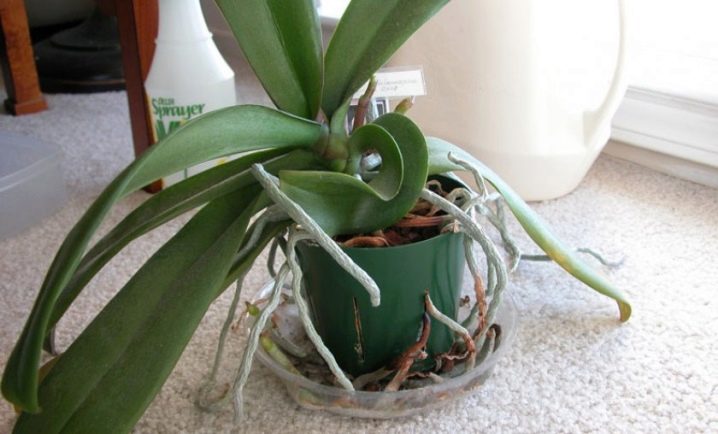
Why isn't the orchid blooming?
The flowering time, its frequency and duration depend on the characteristics of the plant variety. Most varieties begin to form their first buds at the age of 1.5-3 years. To determine the age of an exotic, it is necessary to count the number of shoots in its outlet - for example, two-year-old plants have at least 5 of them. Orchids usually bloom every 2-3 months. Proper care and maintenance of the plant ensures that it blooms 2-3 times a year. Experienced plant breeders argue that if an exotic does not form flowers for more than a year, then this indicates an obvious presence of some kind of problem.
At the same time, stubbornly not blooming plants can feel quite at ease. They release new leaves, grow roots and even flower stalks. However, the formation of buds on the peduncles does not occur. It even happens that an orchid can release a peduncle, which dies off very quickly. The main factors due to which orchids do not form buds and do not bloom are:
- natural causes;
- improper care.
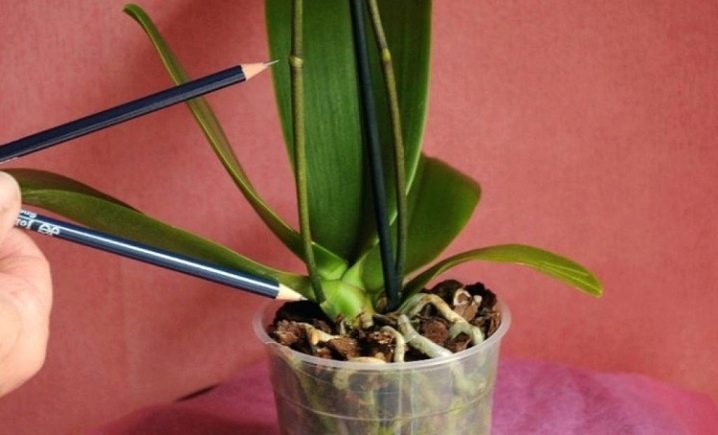
Natural causes
One of the reasons why exotic plants stop blooming is their natural biological wilting. Over the years, orchids slow down the metabolism and biological processes that ensure the development of the plant, its flowering and growth. Many exotic plants begin to bloom less often with age, it takes longer and more difficult to recover after flowering. With ideal care, most orchids have a lifespan of about 7 years.
Another common reason why orchids do not bloom for a long time is their dormancy stage. After flowering, any plant needs time to recuperate. During this period, it economically spends its resources, does not form new peduncles and buds. The duration of the dormant stage depends on the type of orchid.
Another natural reason why exotic plants do not bloom is the stage of their active vegetation. Plants enter this stage in spring, preparing for the flowering period. At this stage, orchids develop intensively, produce abundant foliage and build up a root system.
Considering that all plant resources at this stage are consumed very actively, bud formation should be expected later, when the growing season is completed.
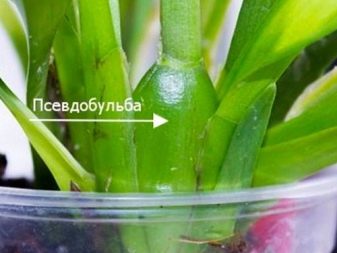
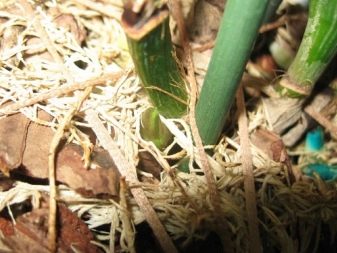
Improper care
Failure to follow the rules of care is the main factor, as a result of which orchids bloom poorly or do not bloom at all. Among the main reasons in this case, the following should be noted:
- improper lighting;
- violation of the irrigation regime;
- violation of the feeding regime;
- unsuitable substrate;
- violation of the temperature regime;
- unsuitable humidity of the substrate and air;
- damage by pests, plant diseases.
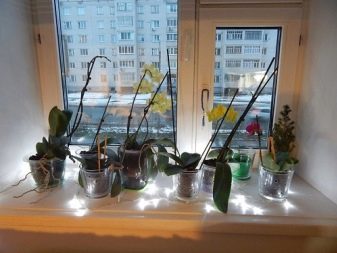
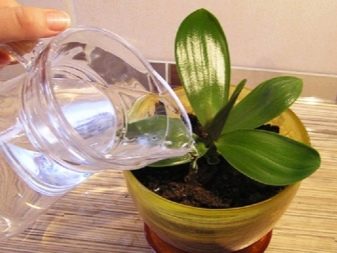
Incorrect lighting
In their natural habitat, most orchid species grow in soft, diffused light. Direct sunlight has a detrimental effect on the delicate leaves and roots of plants, drying them out and causing thermal burns. Insufficient illumination can also be the reason why plants stubbornly do not bloom. At the same time, the lack of light does not prevent the orchids from building up their green mass. In conditions of a lack of light, exotics give new leaves and even shoot arrows, but they do not have enough strength to form buds.
If the daylight hours are less than 12 hours, the plants will not be able to bloom.
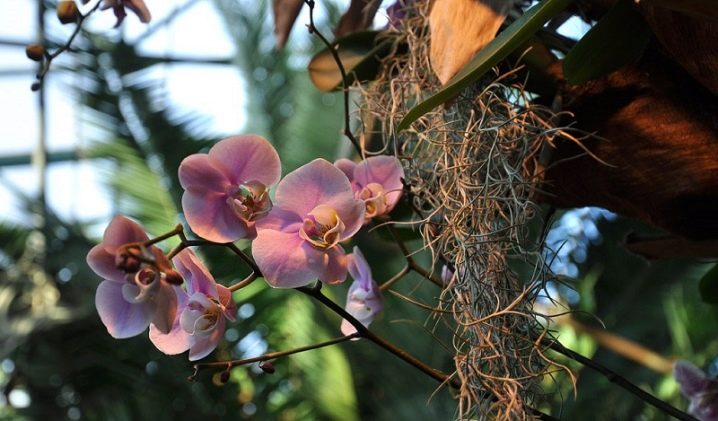
To provide your orchids with adequate lighting, you need to choose the right place for them. It is best, according to flower growers, to place them on the windowsill on the eastern side of the house, where from the very morning the flowers will bask in the soft rays of the rising sun. When placing pots of orchids on a south-facing windowsill, the plants should be fenced off from the window glass with a tulle curtain. Another option for protecting exotics from direct sunlight involves pasting the windows with a special shading film that scatters light.
It must be remembered that the roots of plants also need sunlight, which is required for full photosynthesis. To ensure that the root system can receive the right amount of light during the day, hybrid orchid varieties are planted in glass pots or transparent plastic containers. In winter, when daylight hours are greatly reduced, the plants must be supplemented.
To do this, growers use fluorescent lamps, otherwise called fluorescent lamps.
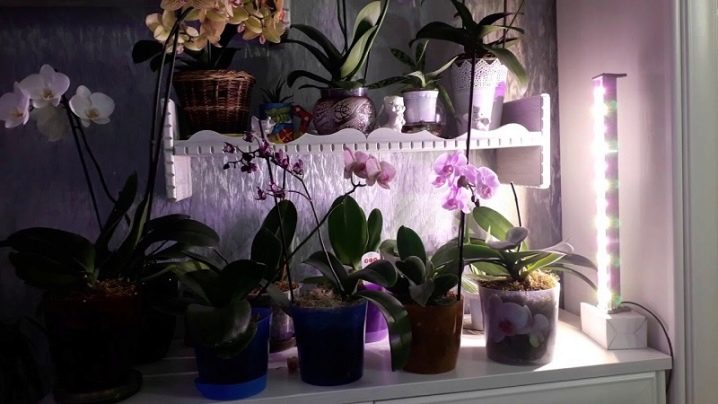
Violation of the irrigation regime
Improper watering of plants is one of the common reasons why orchids stop blooming or do not form buds at all. For the tropics, which are the natural habitat of exotic species, a phenomenon called the "rainy season" is characteristic. Due to this and many other factors, tropical forests are always characterized by high humidity, and plants do not experience a moisture deficit. Drought is considered fatal for exotic beauties, painfully tolerating insufficient humidity. To replenish the water requirement of orchids, in summer they should be watered 2-3 times a week, in winter - 1-2 times a week. In very hot seasons, the frequency of watering can be increased.
Many novice flower growers, fearing drying out of plants, often abuse watering. As a result, the roots of orchids, as well as their peduncles and leaves, begin to rot. In order to prevent exotics from decaying, they should be watered only as needed. An indication that orchids require watering is a change in the color of their roots from pale green to gray-green or gray.
It is worth noting that planting orchids in a transparent pot is also necessary for this reason - the convenience of monitoring the state of the root system.
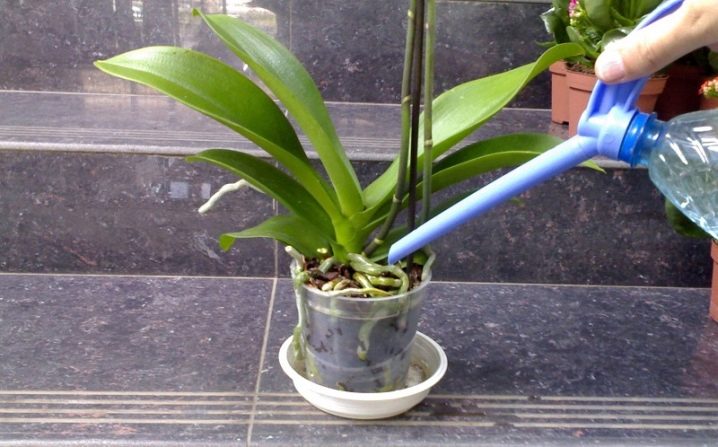
Violation of the feeding regime
Often novice growers complain that the orchid produces foliage and is actively developing, but does not bloom. At the same time, the owners of exotic plants complain that they regularly fertilize the plants with complex fertilizing, but the formation of buds does not occur. Abuse of fertilizing (especially nitrogen-containing ones) is a common mistake of many novice flower growers, leading to the "fattening" of plants. With an excess of nutrients in the substrate, orchids intensively grow green mass and roots, but flower buds do not form for six months or more. To prevent this from happening, you should not indulge orchids with frequent feeding.
Experienced flower growers recommend fertilizing the substrate during the period when the plant enters the stage of active vegetation. It is not difficult to determine it: at this time, the orchid begins to form new leaves and roots.Fertilizing at this stage will help the plants gain additional strength to build up green and root mass. They stop feeding with the appearance of peduncles. Novice growers who continue feeding at the time of flower stalk formation usually complain that the orchid was able to release the arrow, but for some reason stopped developing further. The culprit is the excess nitrogen accumulated in the substrate.
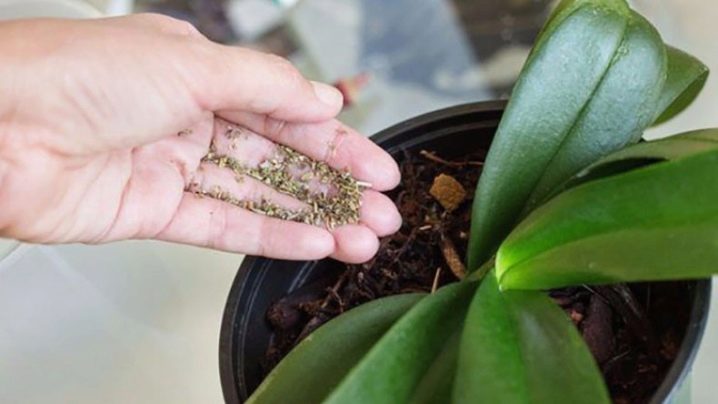
Unsuitable substrate
The quality and composition of the substrate in which the orchid grows play an important role in its flowering. Plants experience discomfort in the wrong substrate and do not bloom. A suitable substrate for capricious beauties is a mixture consisting of the following components:
- sphagnum (moss);
- chopped pine bark;
- vermiculite;
- clean coarse sand;
- peat.
This mixture will provide full air exchange and oxygen access to the roots.
In light and breathable mixtures, the root system of orchids will fully develop, which will undoubtedly have a beneficial effect on flowering.
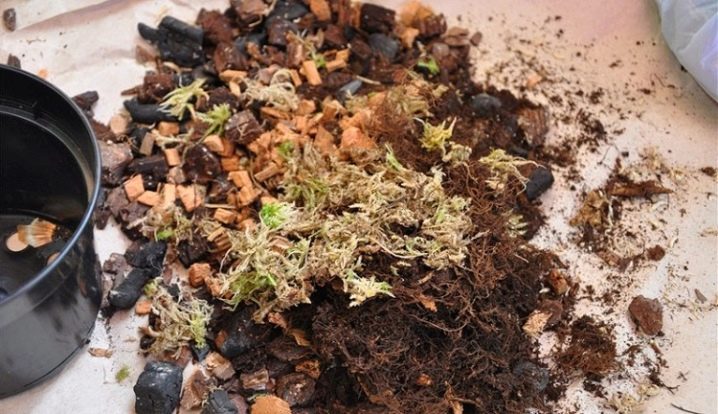
Temperature violation
Novice flower growers are also faced with situations when the orchid has already passed the growing season and even shot an arrow of a peduncle, but suddenly acquired a painful appearance and stopped its development. Such situations often occur when the temperature regime is violated. It is important to take into account that the tropical origin of these exotic beauties requires appropriate conditions and the absence of strong temperature changes. These plants feel most comfortable at a temperature of about 20 ° C. Lowering the air temperature to + 10 ° C is the strongest stress for them, as a result of which exotics can stop the development of flower buds and even die.
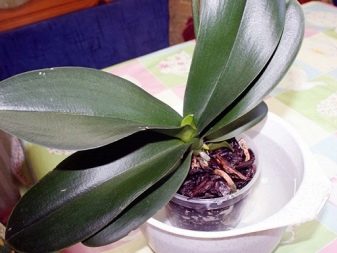

Unsuitable substrate and air humidity
Tropical forests are characterized by high air and soil humidity. With a lack of moisture in the air and substrate, orchids experience stress, as a result of which they can stop the formation of peduncles and buds and even die. In order to prevent the leaves and roots of these capricious exotics from drying out, you should control that the substrate in the pot is constantly moderately moist. However, it is unacceptable to flood the plants, since waterlogging of the substrate leads to decay of the roots. To maintain optimal air humidity, orchids are regularly sprayed with warm water from a spray bottle, and a wide plate or bowl of water is placed near the pots. As the evaporation proceeds, the moisture molecules will saturate the air, which will have a beneficial effect on the condition of the plants.
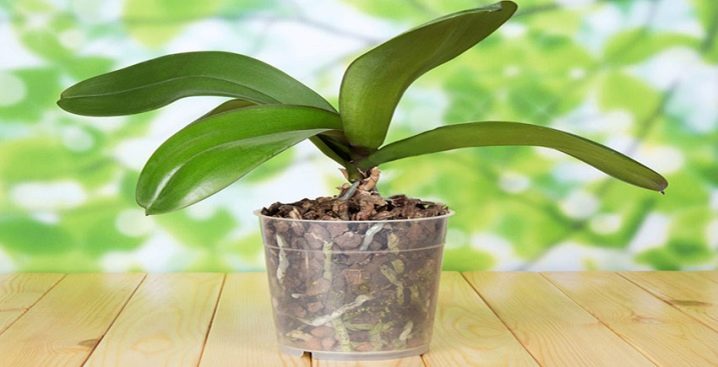
Plant disease or pest infestation
Very often, orchids are attacked by pests and pathogens of various diseases, which can not only stop flowering, but also lead to the death of the plant. To prevent this, it is important to inspect each flower regularly. Most pests (aphids, whiteflies, thrips) are visible to the naked eye. Very small parasites can be detected by examining the orchid with a magnifying glass.
During the inspection, it is important to assess the condition of the plant, to note the presence or absence of strange spots, traces of decay on it. All parts of the plant should be inspected - leaves, buds, peduncles, children and roots.
If pests or symptoms of disease are found, the affected orchid should be isolated and thoroughly treated.
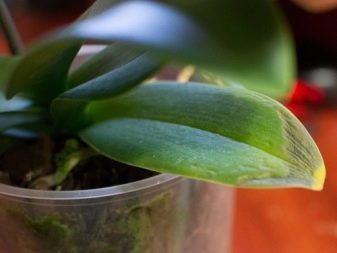

What to do?
If the plant is absolutely healthy, and the rules of care are carefully followed, you can make the orchid bloom using special techniques. Artificially stimulate flowering is allowed by light stress factors, which at home activate the latent potential and mobilize all the exotic resources. So, a short-term increase in temperature can stimulate the plant to release a peduncle and begin to form buds. To do this, a pot with an orchid should be placed for half an hour in a basin of water heated to 40 ° C.
No less effective is a very warm shower, which is arranged for orchids to stimulate flowering. First, you need to check the temperature of the water - it must be tolerable for the hands. Very hot water can burn the leaves and roots of exotic plants. This procedure mimics a tropical rainstorm, which an orchid growing at home can take very favorably with.
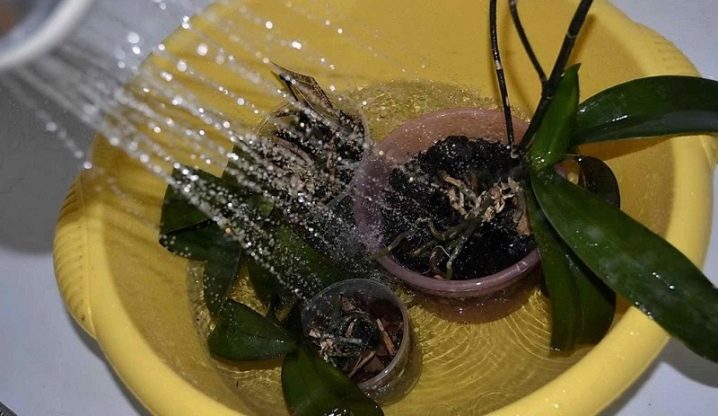
You can try to create a little stress on the orchid that needs to be woken up by briefly lowering the temperature. To do this, the pot with the plant should be placed on a cool balcony for a week, making sure that the air temperature there does not drop below 0 °. In winter, this procedure cannot be carried out. A drop in temperature will give a signal to the plant about an approaching wintering and, as a result, an impending dormant period. This, in turn, can stimulate a long-awaited lush bloom.
To encourage your orchid to bloom again, you can try replanting it in a new pot. It is important to make sure that the diameter of the pot does not differ from the previous one or is slightly larger. The stress caused by transplanting can cause the plant to sprout again and bloom beautifully again. Artificial stimulation should not be overused, as this drains the strength of the plant.
Re-experiencing stress, the orchid wastes its resources and may die.
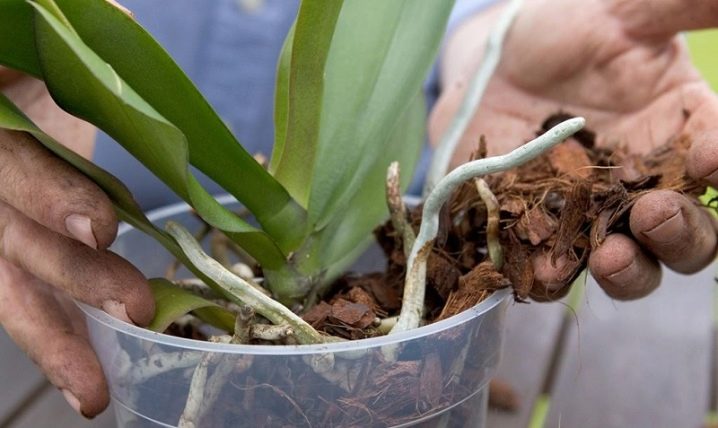
How to take care of it properly?
In order for the orchid to bloom on time and profusely, it is necessary to provide it with high-quality conditions of detention, corresponding to its natural habitat. This provides for a stable temperature regime, constant humidity of the substrate and air, a sufficient amount of soft scattered light during the day. Timely prevention of diseases and pests is also one of the conditions for proper care of exotics.
Timely feeding will provide additional plant nutrition, which is a very important condition during the growing season. Along with this, it is important to monitor the quality of the indoor air - it should be warm, moderately humid and fresh. When ventilating the room, it is necessary to remove the pots with plants in another place so that they do not suffer from a draft. Plant pots should not be rearranged during flowering. Changing the habitual place and conditions of existence is stressful for orchids, as a result of which they can stop bud formation and stop blooming.
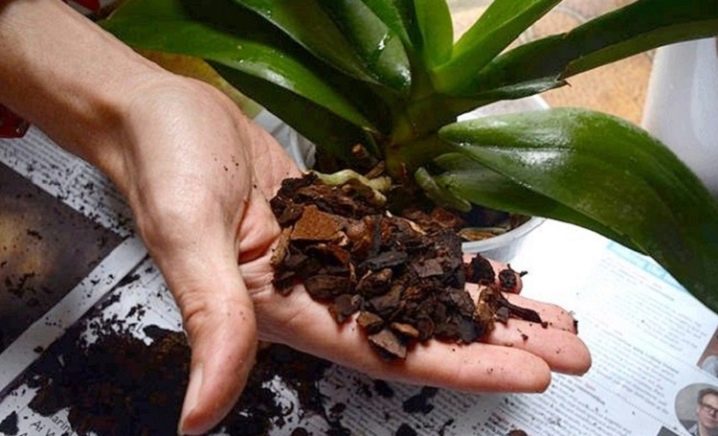
Advice
In order for orchids to be able to delight their owner with long and constant flowering, it is important to pay attention to their condition at the time of purchase. Before purchasing a flower, you must carefully inspect for pests or traces of diseases. During the inspection, it is required to assess the condition of the root system. The roots of healthy orchids should be firm, juicy and green. In order to soon enjoy the delightful flowering of exotic plants, when buying, you should give preference to plants that already have flower stalks and well-formed buds. If you place such an orchid in conditions identical to the original ones, and provide it with full care, then soon it will be possible to appreciate all the charm of its extraordinary exotic beauty.
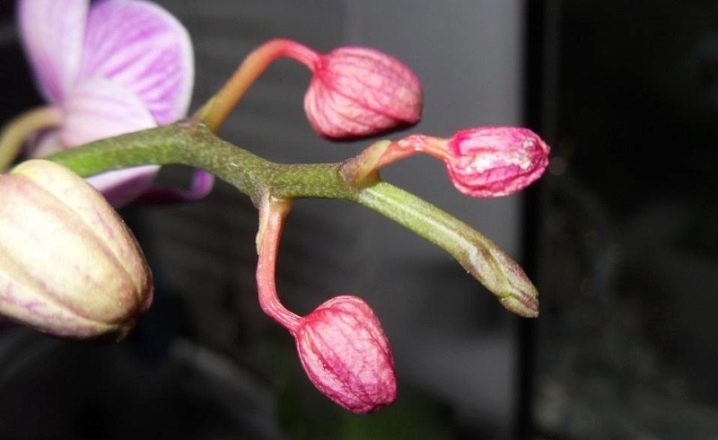
For information on how to make an orchid bloom, see the video below.































The comment was sent successfully.